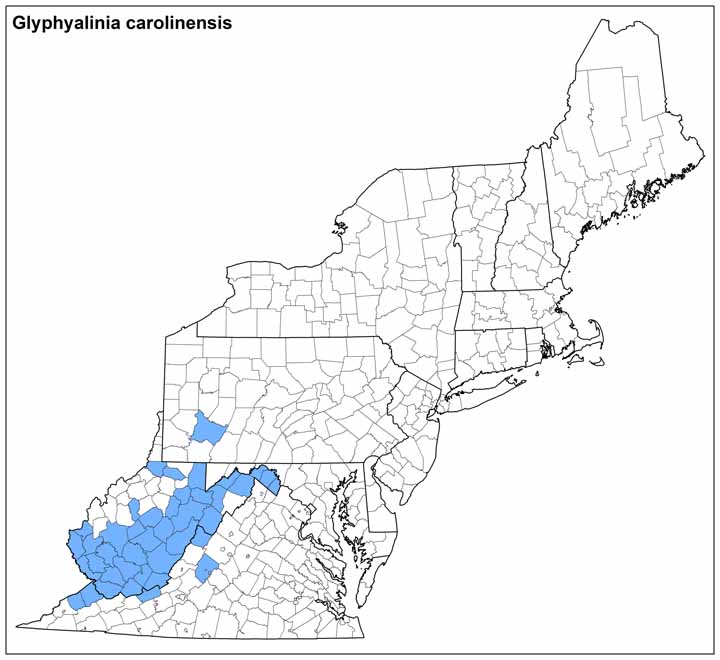Land Snails
.jpg)
.jpg)
.jpg)
Photo(s): Views of a Glyphyalinia carolinensis shell, © Dan Dourson.
Click photo(s) to enlarge.
Glyphyalinia carolinensis (Cockerell, 1890)
Family: Zonitidae
Common name: Spiral Mountain Glyph
Identification
Width: 10-12 mm
Height: 4.4-5.5 mm
Whorls: 5.0-5.5
Glyphyalinia carolinensis is a very large glyph with a depressed shell that has moderately expanding whorls. The slightly expanding lip at the inner edge of the aperture nearly fills the umbilicus leaving only a small perforation. The shell is translucent light brown, sometimes tinged with hazel or pink. Whorls are sculptured with widely and uniformly spaced impressed lines that parallel the nearly imperceptible growth lines. This sculpture is strong apically and continues on the base diminishing near the umbilicus. The shell is also sculptured with spiral engraved lines that are visible with magnification. The dorsal surface of the animal is blue-grey.
Ecology
Glyphyalinia carolinensis is usually found in moist leaf litter on river bluffs and less often on mountainsides. This species is found on neutral to calcareous soils and appears to be a calciphile (Nekola, 2010).
Taxonomy
This animal has also been called Zonites carolinensis, Z. caroliniensis, Vitrea carolinensis, Retinella carolinensis, and V. carolinensis var. wetherbyi.
Distribution
Glyphyalinia carolinensis ranges across the southern Appalachian Mountains from west-central Virginia to the North Carolina and Tennessee border. In Virginia the species is distributed from Rockbridge County to the southwest corner of the state.
Conservation
NatureServe Global Rank: G4, Apparently Secure.
John Slapcinsky 10/2012
Range Map


